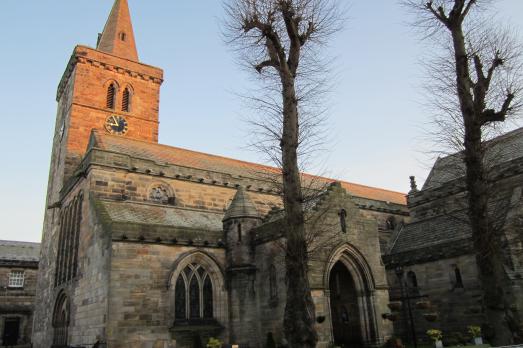In the 1800s it was considerably altered, but a major restoration in 1909 restored the church to its original floorplan. The architect responsible was Peter MacGregor Chalmers, known for his sympathetic historical work.
John Knox, often called the father of Presbytarianism, preached here when the church was 'reformed' from being Catholic to Protestant. He is commemorated in the south porch. There is also a grand black and white marble monument depicting Archbishop Sharp receiving a crown from heaven. He was assassinated in 1679.
The elaborately carved font of Caen stone with figures in the pedestal, and the memorial pulpit carved from Iona marble, alabaster and onyx, are also worthy of note. The real splendour, however, is in the Arts and Crafts wooden furnishings, with many in the Hunter Memorial Aisle, and the variety of finely executed stained glass by leading artists. Contributors include Douglas Strachan, Herbert Hendrie and William Wilson.
The badges of all the Scottish regiments of World War I are set into the clerestory windows.
Further admirable features include the oak barrel roof, a Harrison & Harrison organ, and a 27 bell carillon by Taylor of Loughborough. The operator of this contraption manipulates levers that move the bell hammers to play music.



